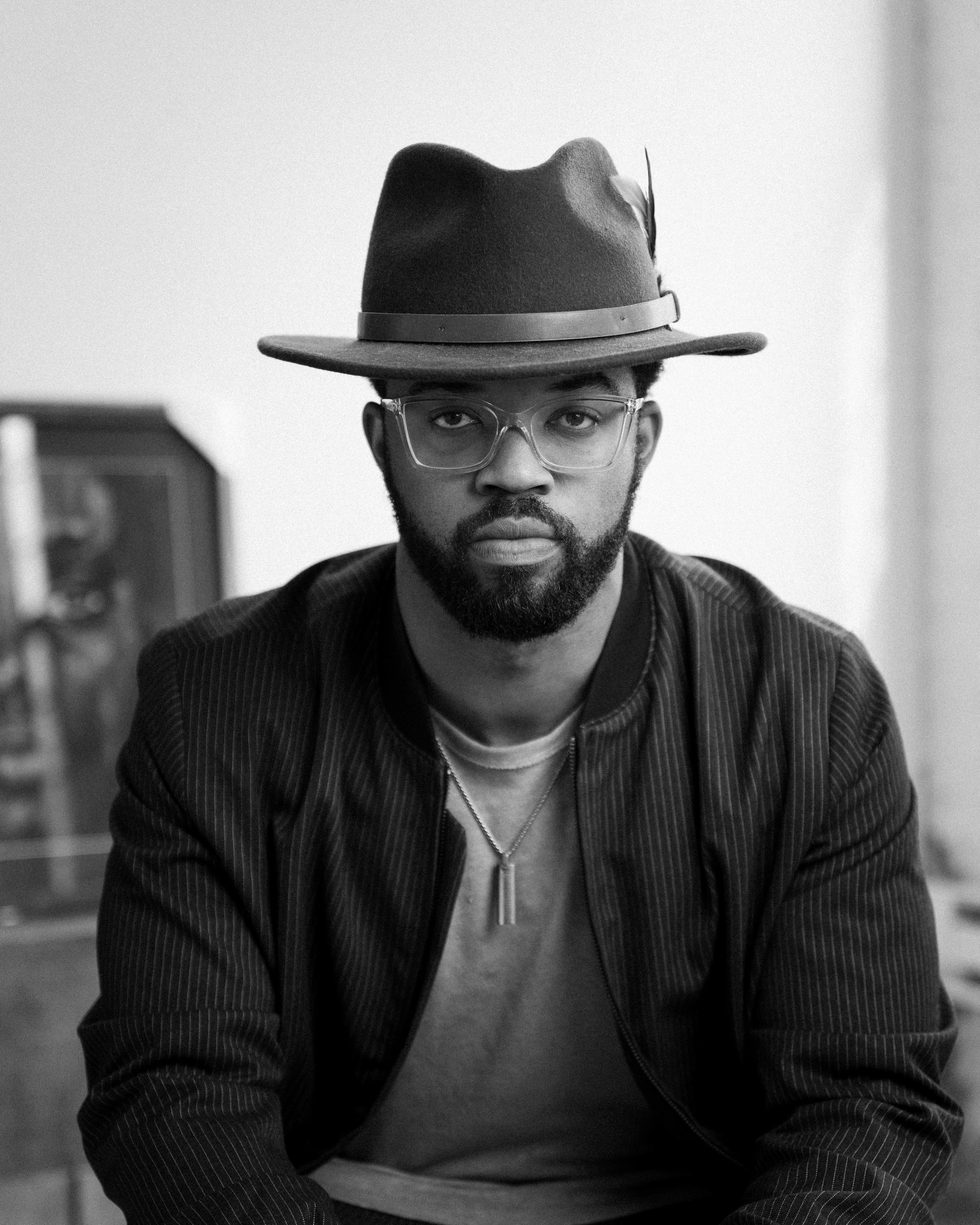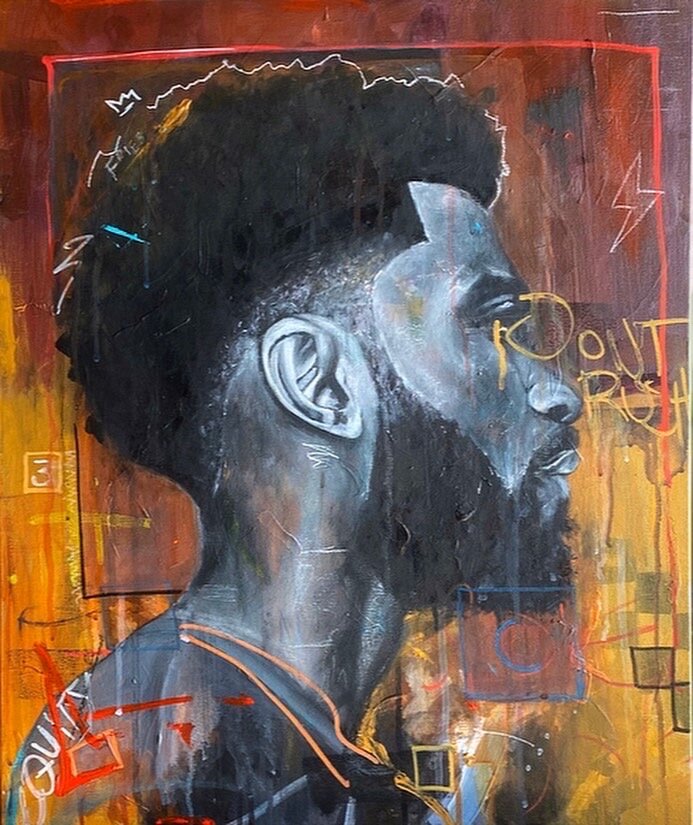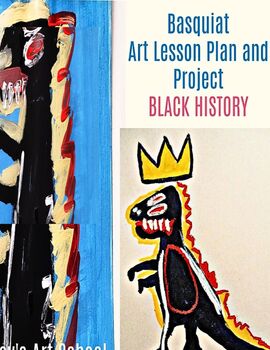Teach about Black Artists Series: Dina Dee

What was your Journey to Becoming an Artist?
Before I was an artist, I had left my job to do photography full time. I initially helped my mother create and manage a crochet shop on Etsy. My mom passed away in 2014. My whole family is really close, and I was quite close to my mom. We spent a lot of time together.
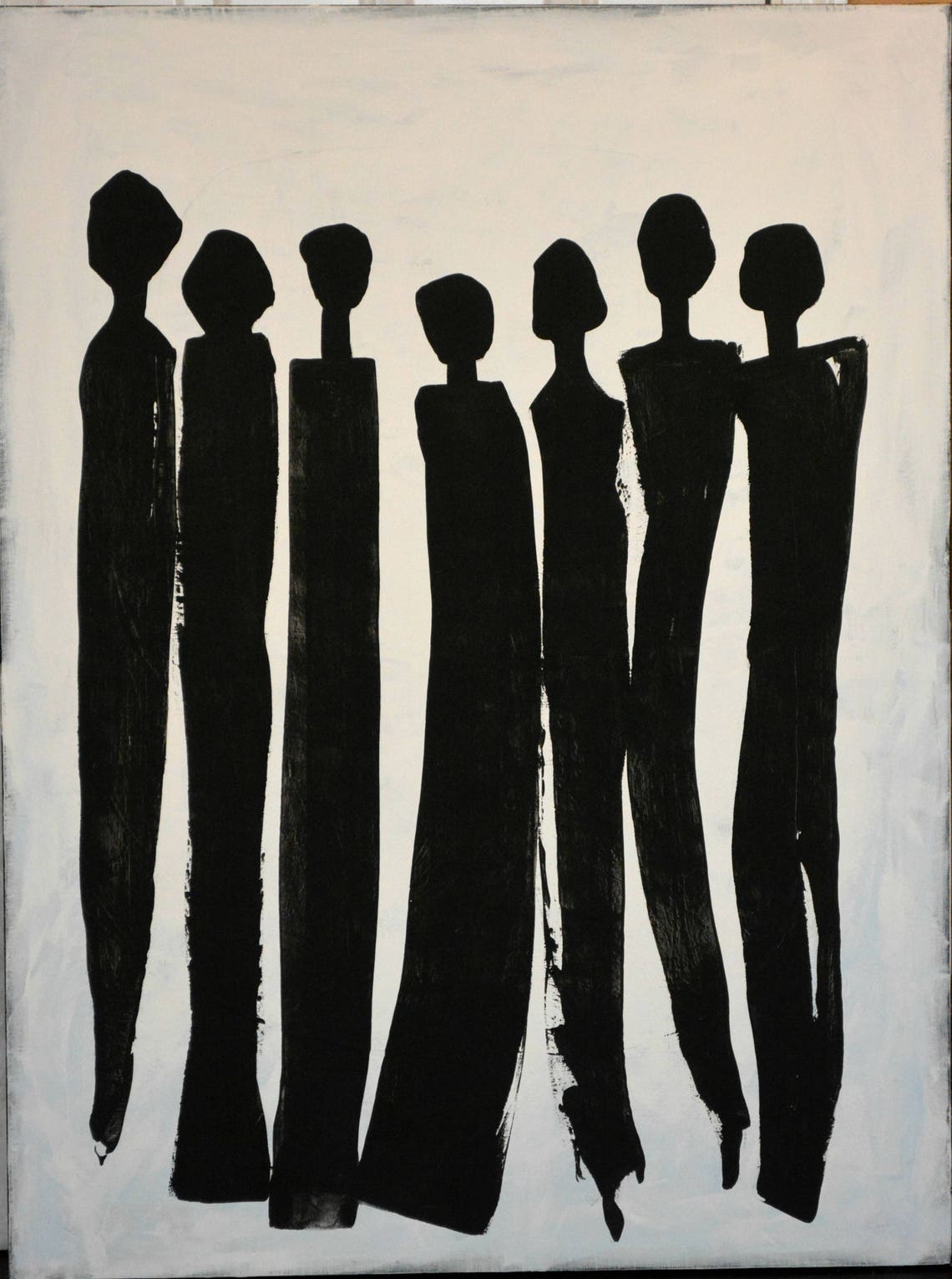
Usually, when I have something on my mind, I journal. I was at a park and couldn’t write in my journal and unload my feelings. I went home and picked up my mom’s acrylic paint tubes and supplies. After grabbing the supplies, I returned to the park and just started painting. I pretended like I was my mom. I painted nine paintings in that one sitting. With each painting, the emotions that I went through were very different. I had tears on some of the first ones.
I took all of my mom’s crochet down and I put the paintings all up on the shop. They sold like crazy! The next day I went back to the park and painted nine more paintings. They just kept selling. That is how I started. I will never forget that day.
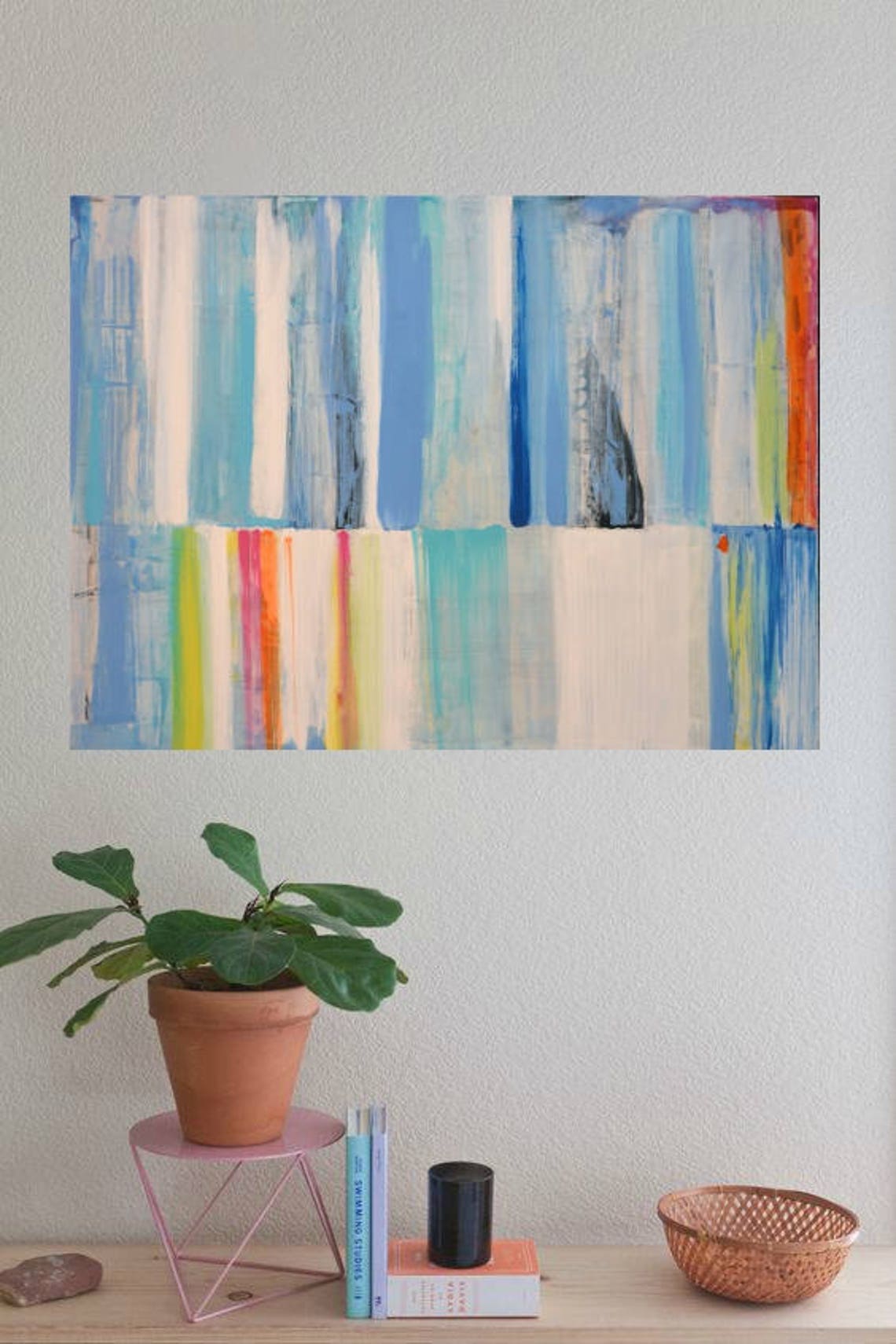
My intent is to make art that stirs the soul and connects us not only to the human experience, but also to what lies beyond our sight. My creative process is about relationship/connection…to the beauty of the world, but also to my soul, my spirit, and God. My process is completely organic and spontaneous ~ what emerges on the canvas is an internal language that is highly emotional and very personal, yet universal at the same time... speaking of places unseen ~ like closed eyes. My inspiration builds from the coming together of color and contrast…my work is alive with emotion through the movement of the brushwork and the luscious layered colors. Much like memories, each painting is filled with layer upon layer of paint, building a rich history into each piece. My heart is on full and pours over as I create…each painting with its own pathway; its own purpose.”
TO PURCHASE RESOURCES TO HELP YOU TEACH ABOUT BLACK EXCELLENCE, CLICK HERE
Teach about Black Artists Series: Dwight White II
To many, Dwight White was always destined for greatness, however, in the beginning it was not about art at all. Being the son of two extremely athletic parents in Texas, his life seemed predetermined. He was going to be a top tier athlete. Starting at the age of seven, his day to day revolved heavily around two things; football and school. On rare occasions, Dwight would have some down time in between. He often used this time to draw. Art gave him a different sense of freedom that didn't exist on the field. Regardless, his creative emotions were left on the back burner, as he reached for his helmet. "
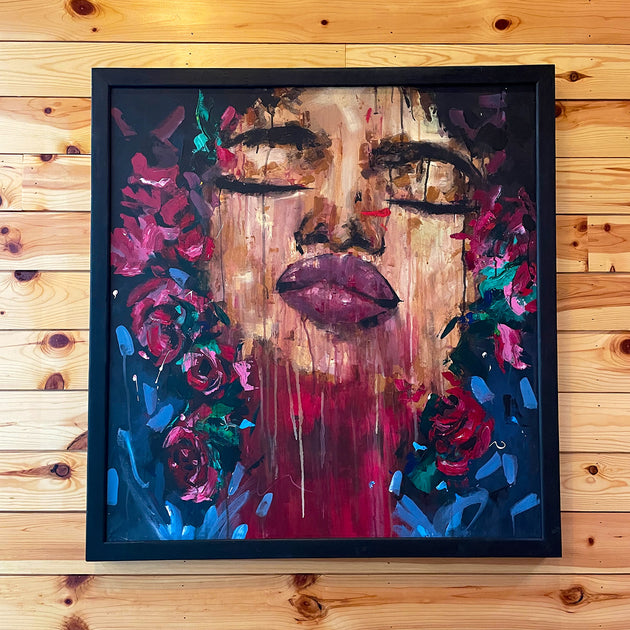
"I've always been a creative deep down. I just never made time for it."
Click here to view collection for sale
The Hit That Changed It All
While the creative flame quietly burned, Dwight continued his pursuit for athletic excellence instilled within him from childhood. The story of his life was being written in a positive yet predictable fashion... that is until the unpredictable happened. During his junior year of college football, he was hit so hard that it caused internal bleeding. Upon further inspection, doctors discovered something unusual. Dwight White was born with just one kidney and it had already sustained some damage. At this point if he continued to play football the results could be fatal. Severely depressed, he was left with no choice but to walk away from the only life he knew.
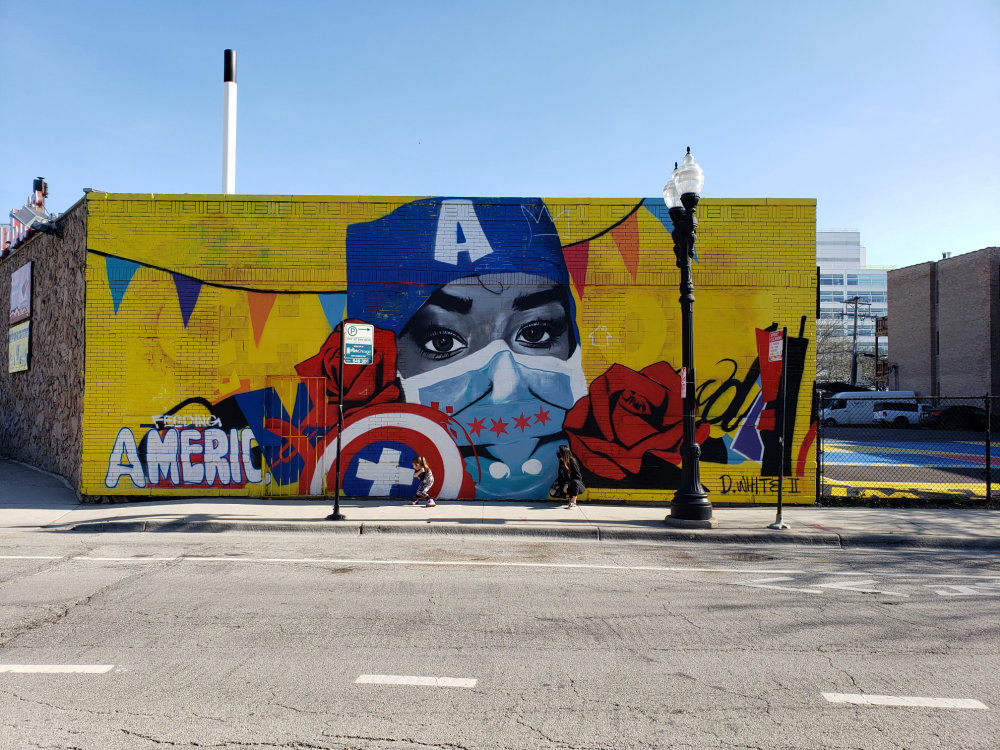
"Super Lu" by Dwight White II
photo credit
You came to Northwestern as a student-athlete. How did you discover your artistic side?
Painting was one of the things that came about as I was trying to redefine and explore myself while also battling mental health issues. Art was the thing that got me out of dark places. I actually started painting during my senior year at Northwestern, just before I graduated. I took an intro to painting course, and that’s the only painting class I’ve ever taken.
Teach about Black Artists Series: Natalie Odecor aka Natalie Osborne

Natalie Osborne received her BFA from The School of the Art Institute of Chicago in 2002. The following year she accepted a position in Brooklyn, New York as a teaching artist for The Leadership Program Inc. where she taught painting in public schools in Brooklyn and in Harlem. While in New York, Natalie exhibited her paintings in group shows at Rush Arts Brooklyn Gallery. In 2009 she joined Aaron Marx in Toronto, ON to assist in the opening of Studio 561, a contemporary art gallery located in downtown Toronto at Bloor and Bathurst. “We literally lived in the gallery.” In 2011, Natalie returned to Chicago to work with the Downtown Arts Association in their effort to turn empty storefronts in the Loop into Pop Up galleries, working under curator Stuart Hall at Gallery 220 (220 S. Wabash Ave.) In 2014 she opened her online store, selling original paintings and prints. “My paintings are about the strength and purpose that illuminates from within every woman.”

Berry from Trial by Inspiration: I’ve found that as more and more artists share their work on platforms like Instagram and Pinterest, the more everything starts to look the same, and it’s hard to find unique voices in all the “trendy” visuals. Your work is so bold and distinctive, how did you develop your style?
Natalie Osborne @natalieodecor: As I am painting one piece, I always have the visual of the next painting in my mind. I can’t wait to finish the painting so I can start the next one. I think my style came along from painting only what I have visualized mentally. That’s half of the work, being able to see what you are going to paint before you paint it. Some of the ideas come out successfully, and some fail. I’ve learned what works and what doesn’t, based on that process.
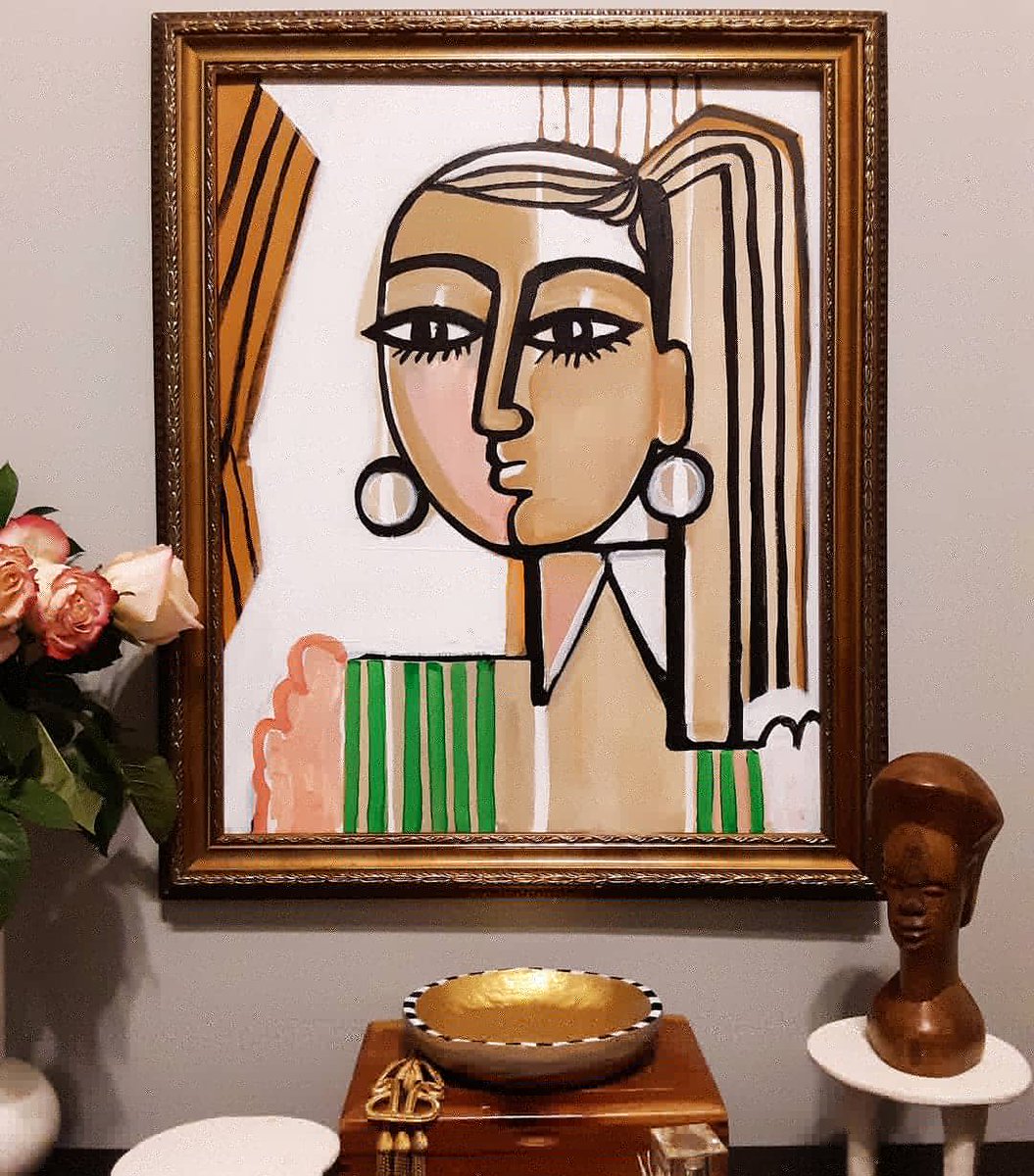
The Chicago-born, Art Institute-trained artist draws inspiration from “graffiti, fashion and art history,” and most often depicts Black women in beautiful, striking portraits marked by vivid colors and bold lines.

TO PURCHASE RESOURCES FOR TEACHING ABOUT BLACK ARTISTS CLICK HERE
Teach about Black Artists Series: Martha A. Wade


Wade incorporates several motifs signifying strength, greatness, longevity and vitality – including depictions of the sun, stars and strong spirit animals such as bears and whales. Wade also deliberately utilizes the grain patterns of her wooden palettes as skin tones of her subjects, who she depicts alongside colorful cityscapes and background elements.
“Utilizing creative energy to express strength, vulnerability, hope or fear has allowed me to find my voice,” she said. “As a female artist, my work can intimidate or allure – but always tells a story through art.”
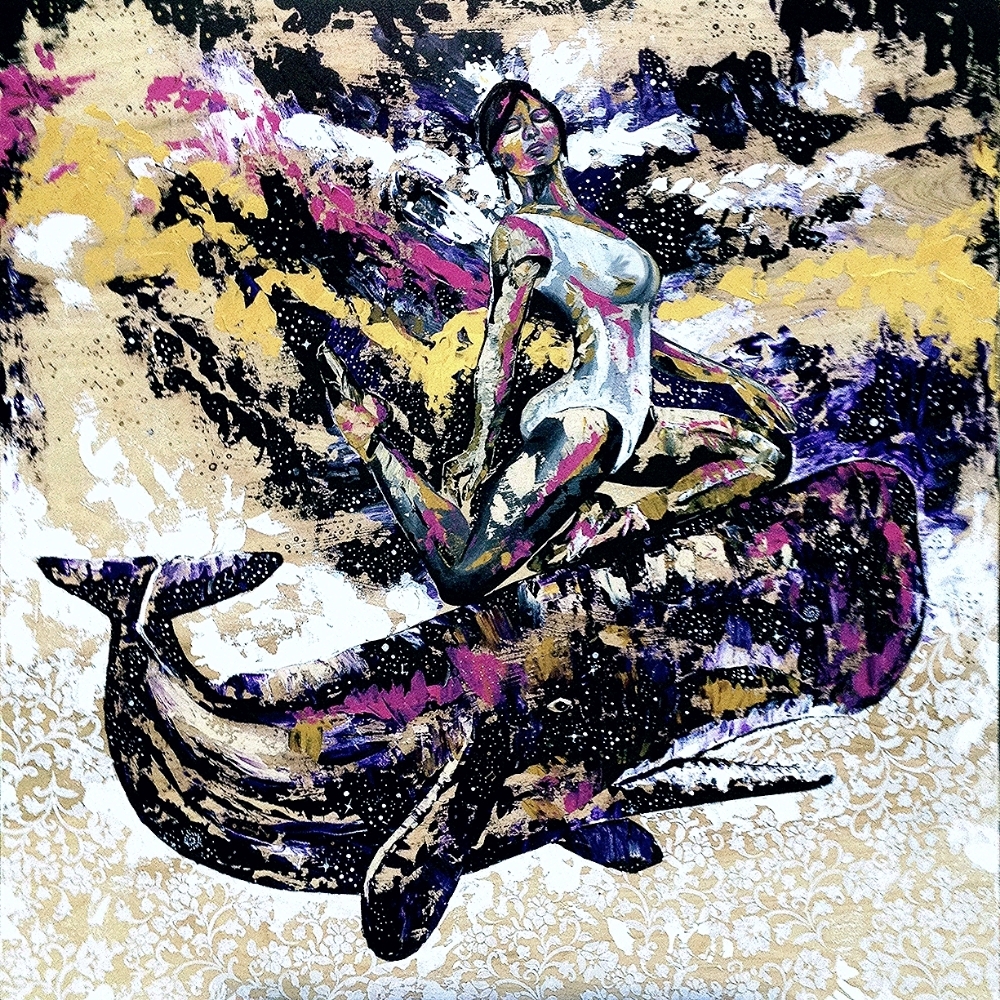
In 2010, Martha participated in her first gallery exhibition, and today her paintings have a bold and vibrant style that explores mankind’s potential on earth and throughout the universe. Martha’s work can be found in private collections nationally in the United States as well as internationally in Scotland, Ireland, and Sweden.
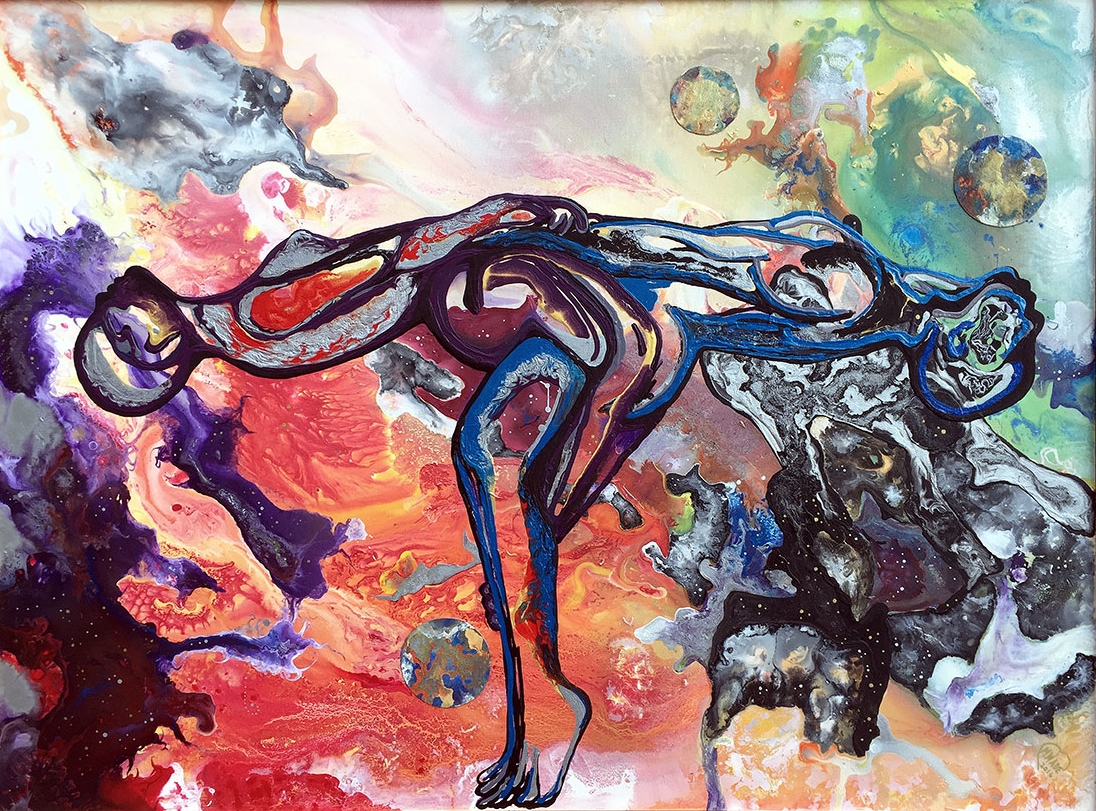
CLICK HERE FOR MORE INFORMATION
CLICK HERE FOR MORE RESOURCES TO HELP YOU TEACH ABOUT BLACK EXCELLENCE
Teach about Black Artists Series: Benny Andrews
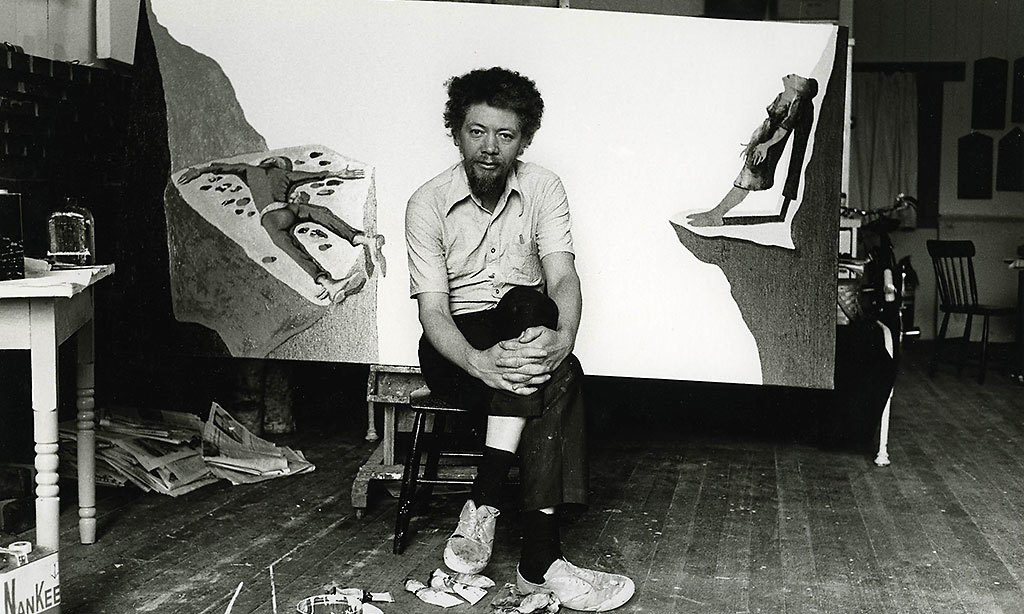
Benny Andrews was an artist, educator and activist. He was born in Plainview, GA in 1930. Andrews earned a BFA from the School of the Art Institute of Chicago in 1958. Soon after, he moved to New York City, where he would live, work and paint for nearly five decades.
Andrews co-founded the Black Emergency Cultural Coalition (BECC), which agitated for greater representation of African American artists and curators in New York’s major art museums in the late 1960s and 70s. He also led the BECC in founding a groundbreaking arts education program in prisons and detention centers. Andrews taught art at Queens College for nearly three thirty years, beginning in the late 1960s. From 1982 through 1984, he served as the Director of the Visual Arts program for the National Endowment for the Arts.
As a student in Chicago, Andrews developed a practice of incorporating collaged fabric and other material into his figurative oil paintings, a technique he would continue throughout his career. In addition to working in oil and mixed-media collage, he made sculptures, prints and drawings. He also illustrated several books written by his brother, the author Raymond Andrews, as well as many children’s books, including a biography of civil rights icon Congressman John Lewis. He continued his prolific output of artwork, which ranged from explorations of history and social justice to intimate depictions of friends and family, until his death in 2006.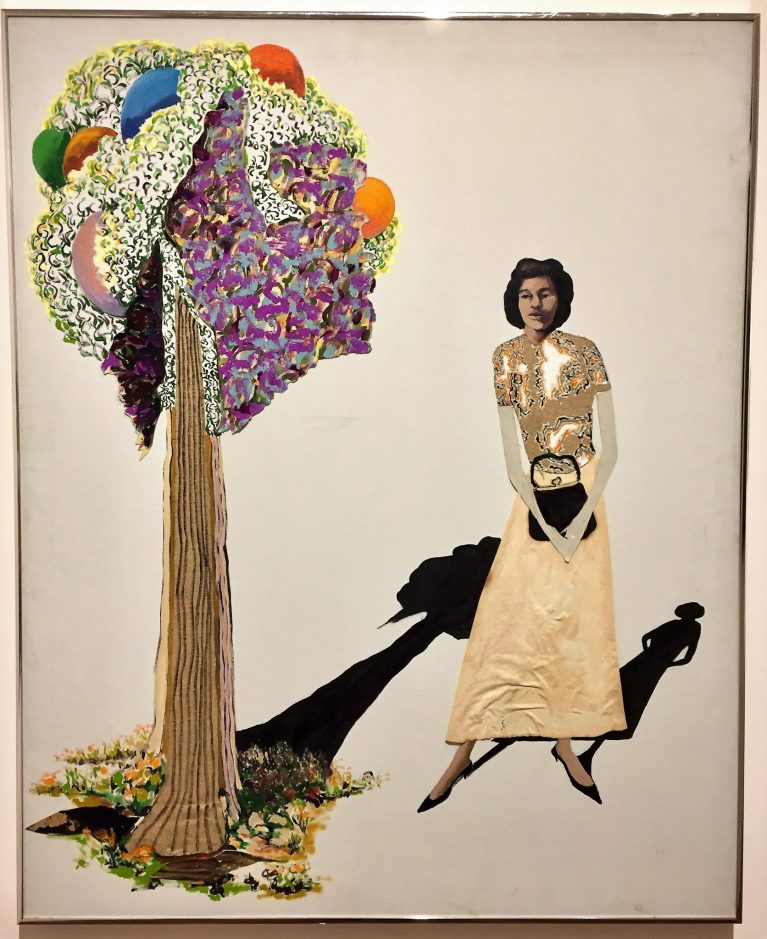


Grandmother’s Dinner, 1992
In 1962, the Forum Gallery mounted his first New York solo exhibition. He went on to develop a reputation as a socially-minded artist and an advocate for greater visibility of African Americans in the art world. For the next four decades, he made and exhibited work in New York, and dedicated himself to activism and education in the community.
SOURCE
Benny Andrews’s “Portrait of the Portrait Painter” (1987), in which the joy of being both an artist and a subject is palpable.
Teach about Black Artists Feature: Chris Ofili
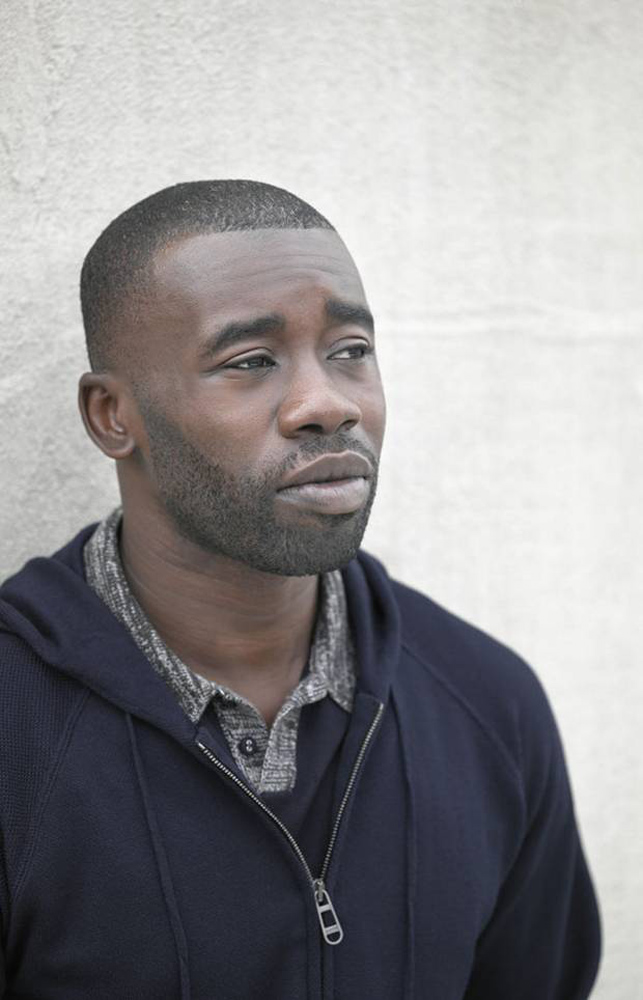
Ofili lived and worked in London for many years but now divides his time between the Caribbean, London and New York.
In 2017 he was awarded a CBE (Commander of the Most Excellent Order of the British Empire) for his services to art.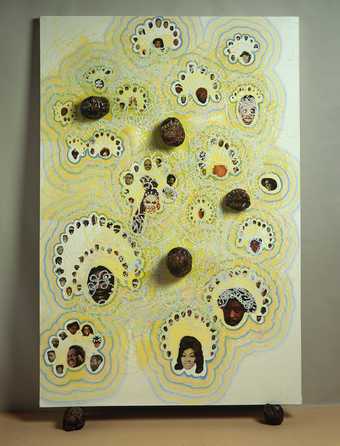
Chris Ofili Popcorn Shells 1995© Chris Ofili, courtesy the artist and Victoria Miro
Early on in his career Ofili drew attention because he used a very unusual material in his paintings: elephant dung!
When he was 23 he won a scholarship which allowed him to visit Zimbabwe in Africa. During his time there he was amazed by ancient cave paintings made from hundreds of dots. He was also intrigued by the small round elephant droppings he saw on the ground. He even managed to bring some elephant dung back with him!
The artworks he made after visiting Zimbabwe show the influence of the dotty cave paintings and the curious dung. Sometimes he stuck small balls of dung to the surface of his paintings, and often used them as little feet for his artworks to stand on. Not everyone thought that art should contain a material like this, and some people were really angry about it. What do you think?
By using a material like dung, which is usually considered worthless, Ofili makes people think about the value they attach to things.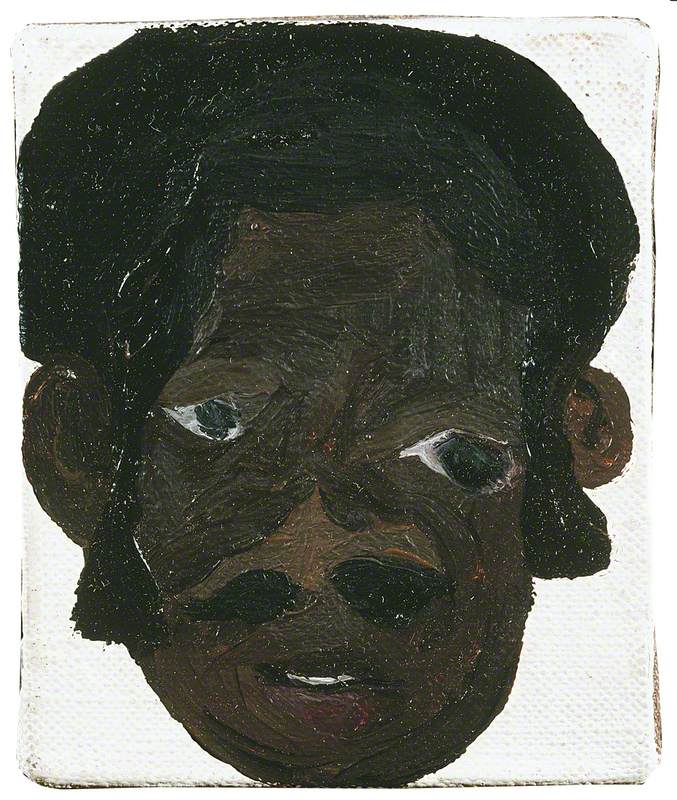
Ofili was also heavily inspired by music, particularly hip hop and also jazz. He saw these types of music as celebrations of Black culture, saying: 'I wanted to paint things that would feel like that music'.
Ofili would sometimes cut out images of Black music stars from magazines and use them in his paintings. By doing this he was celebrating their talent and acknowledging that his artwork was linked to theirs.
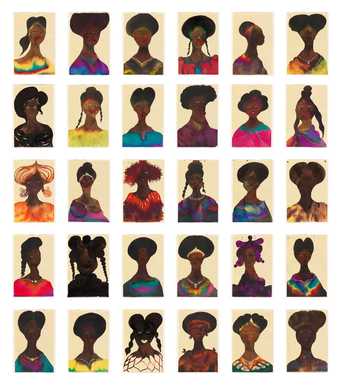
Untitled (1998)
This is an artwork made up of 30 portraits of Black women. Ofili chose to present them as characters who are subtly different. He wanted to highlight the diversity of Black identities.
The miniature paintings celebrate the women's Afro hairstyles and colourful clothes.
Teach about Black Artists Series: Tyree Guyton History lesson and Art project

Tyree Guyton is an American Neo-Expressionist artist who is a proponent of Graffiti art and Urban Environmental art. He has waged a personal war on urban blight on Detroit's East Side, transforming his childhood neighborhood into a living indoor/outdoor art museum. Through his art, Tyree has drawn attention to the plight of Detroit’s forgotten neighborhoods and spurred discussion and action.
“When you come to the Heidelberg Project, I want you to think—really think! My art is a medicine for the community. You can’t heal the land until you heal the minds of the people,” says Tyree. This iconic colorfully painted polka dotted neighborhood, which symbolizes our society’s diversity, has played a vital role in transforming the visual indignities of poverty and have placed an international spotlight in this particular community.
Recognized as one of the most powerful art environments in the world, the HP anchors work in: Reinvention and Revitalization of Urban Spaces, Politics of Creativity, Urban Renewal and Education, Urban Ecology and Environmental Justice through Public Art. As the Heidelberg Project celebrates its 30th anniversary, Tyree’s hope is that the community will assume a larger role in the continued evolution of the Heidelberg Project.
Guyton, now 60, was raised on Heidelberg Street, relying on secondhand clothes and shoes because his family was poor. He watched his stable neighborhood deteriorate into blight, violence, prostitution and abandonment. When he was 8, his grandfather, Sam Mackey, who was a housepainter, gave Tyree a paintbrush.
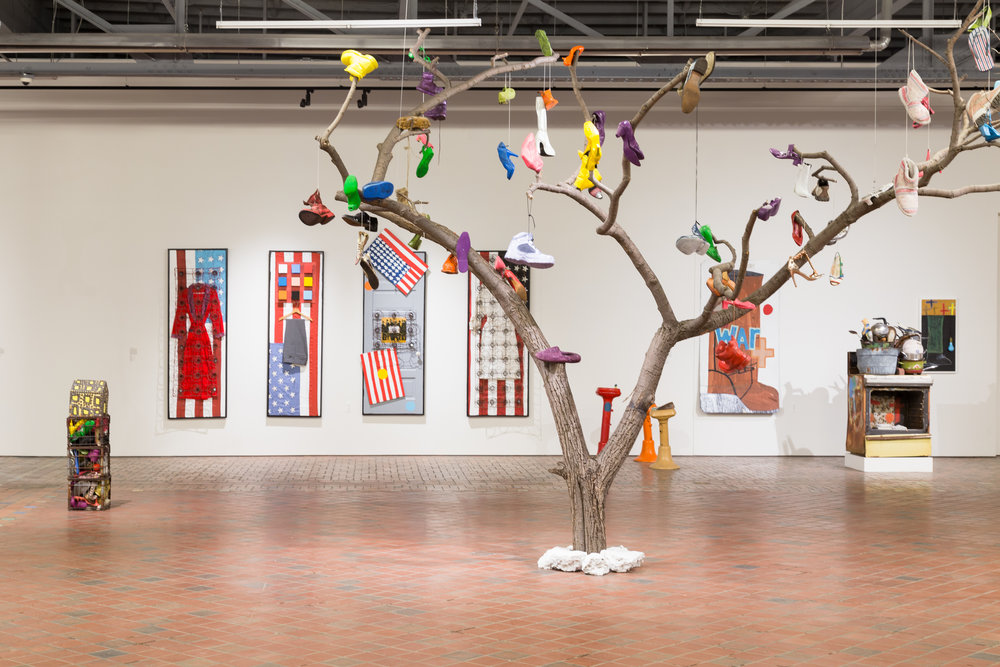
“I felt as if I was holding a magic wand,” Guyton told People in 1988.
But before Guyton could work his magic, he served two years in the Army and returned home to an auto job and a stint as a Detroit firefighter. In 1986, when Guyton was 32, he decided he’d had enough with crime and blight and began decorating crack houses, trees and empty lots with toys, hubcaps, shoes, tires, vacuum cleaners, mannequins, old bikes and TVs.
With his former wife Karen Guyton and 90-year-old Grandpa Sam, Tyree began hanging discarded objects on abandoned houses. Grandpa Sam often painted polka dots because they resembled one of his favorite snacks – jelly beans. For Guyton, the diversity of jelly beans represented racial harmony and became a common theme of the Heidelberg.
Guyton also began to hang shoes from trees and houses after his grandfather recounted stories about lynchings in the south when “all that could be seen were the soles of shoes” of the victim, according to “Imagery of Lynchings” by Dora Apel.

Grandpa Sam was later buried in a casket covered with polka dots. Guyton’s mother, Betty Guyton, now lives in a house covered in polka dots in the heart of the Heidelberg Project.
SOURCE: CLICK HERE

CLICK HERE TO PURCHASE RESOURCES TO HELP YOU TEACH ABOUT BLACK ARTISTS
Teach about Black Artists: Faith Ringgold Art Project and History lesson

Jones grew up in New York City’s Harlem district, and while still in high school she decided to be an artist. She attended City College of New York, where she received a degree in fine arts and education (1955) and an M.A. in fine arts (1959). In the mid-1950s Jones started teaching art in New York public schools, a job she held until the 1970s. After Jones married her second husband, Burdette Ringgold, in 1962, she began using his name professionally.
By the 1960s Ringgold’s work had matured, reflecting her burgeoning political consciousness, study of African arts and history, and appreciation for the freedom of form used by her young students. She began a body of paintings in 1963 called the American People series, which portrays the civil rights movement from a female perspective.
SOURCE: CLICK HERE
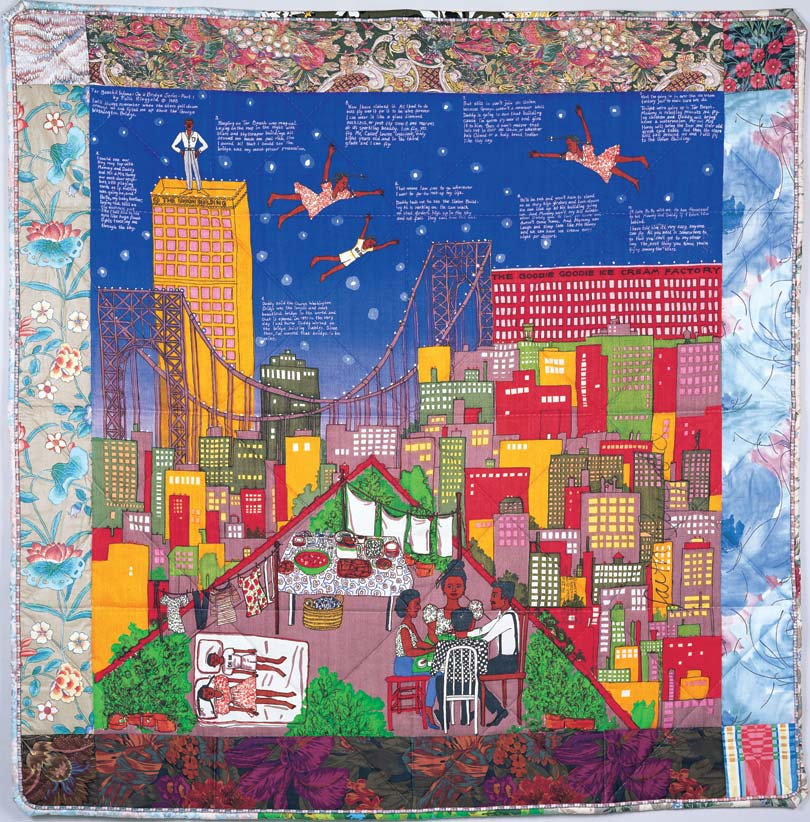
Faith Ringgold made her first quilt, Echoes of Harlem, with her mother, Madame Willi Posey, in 1980. She was inspired to pursue quiltmaking as a vehicle for her art after hearing her mother’s stories of their ancestors, who were slaves trained to make quilts on their plantation. By 1990, the year of her residency at FWM, Ringgold had completed a second quilt, Who’s Afraid of Aunt Jemima?, her first story quilt incorporating both text and image. Her FWM quilt, Tar Beach 2, tells the story of a young African American girl who grows up in Harlem, spending her time outdoors on the rooftops of her urban landscape. The narrative is told through text and image, which are printed with dyes on silk duppioni. Ringgold chose a variety of decorative fabrics to border the quilts, making each quilt in the edition of 24 unique.
In 1991, Ringgold published Tar Beach as a children’s book (Crown Publishers). It has won over twenty awards, including the Caldecott Honor and the Coretta Scott King award for best illustrated children’s book in 1991. Ringgold has since gone on to write other children’s books, including Aunt Harriet’s Underground Railroad in the Sky (Crown Publishers, 1992) and Dinner at Aunt Connie’s (Hyperion Books, 1993).
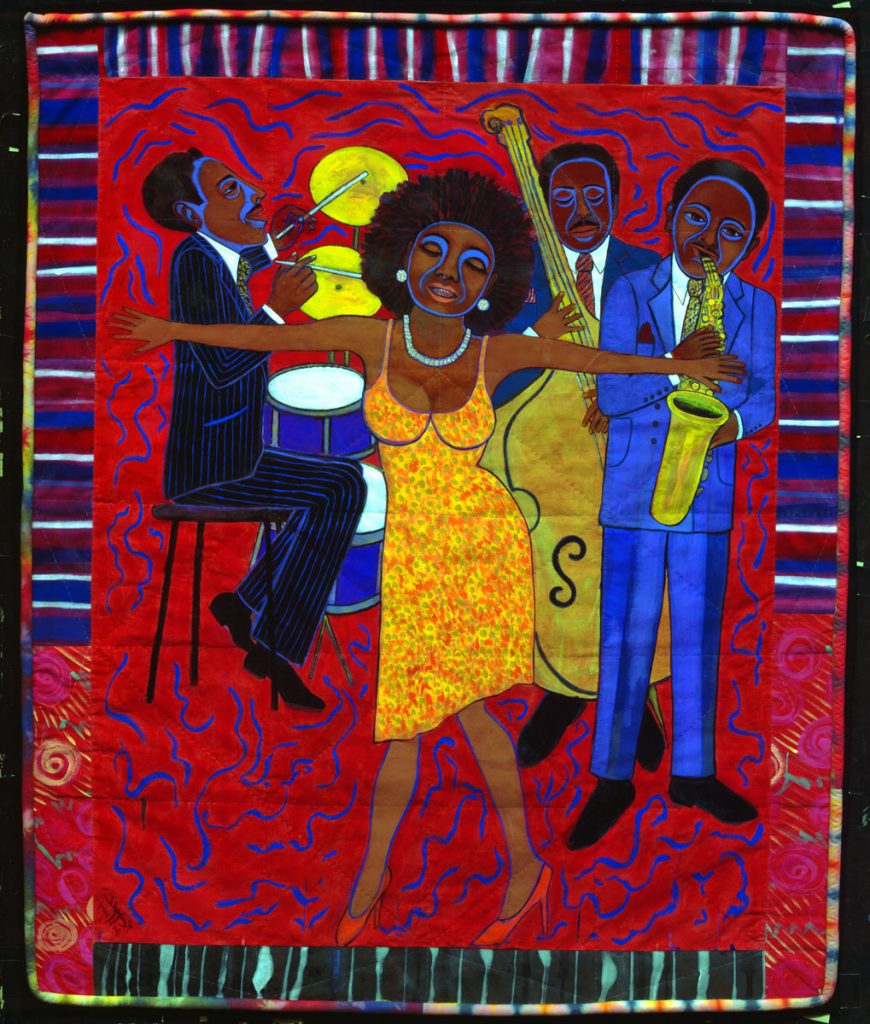

Best known for her story quilts, Faith Ringgold is also a painter, mixed-media sculptor, performance artist, activist, author, and teacher. She was born in 1930 in Harlem, New York, growing up at the start of the Great Depression and in the waning years of the Harlem Renaissance. She was surrounded by creative people and spent much of her youth cultivating her own creativity, earning her B.S. and M.A. degrees in art from City College of New York. After traveling through Europe in the early 1960s, she returned to New York, where she began her first series of political paintings, The American People, and became a major player in artistic events and political protests of the era. Since then, she has been a champion of equality and freedom of speech, helping especially to create opportunities in the art world for women artists and artists of color. This exhibition brings together more than 40 examples of Ringgold’s varied production spanning four decades. It includes story quilts, tankas (inspired by Tibetan textile paintings called thangkas), prints, oil paintings, drawings, masks, soft sculptures, and original illustrations from the artist’s award-winning book Tar Beach.
SOURCE: CLICK HERE
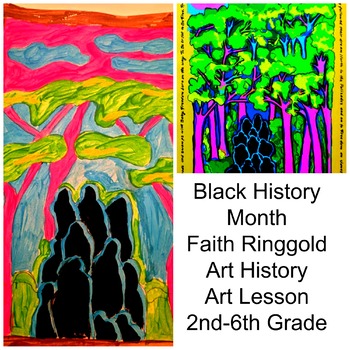
CLICK HERE FOR RESOURCES TO HELP YOU TEACH ABOUT BLACK ARTISTS
Teach about Black Artists Series: Jean-Michel Basquiat History Lesson and Art Project

Early Life
Although Basquiat has long been considered a street artist, he didn’t grow up on the gritty streets of the inner city but in a middle-class home. The Brooklyn, New York, native was born on Dec. 22, 1960, to Puerto Rican mother Matilde Andrades Basquiat and Haitian-American father Gérard Basquiat, an accountant. Thanks to his parents’ multicultural heritage, Basquiat reportedly spoke French, Spanish, and English. One of four children born to the couple, Basquiat grew up in a three-story brownstone in the Boerum Hill neighborhood of Northwest Brooklyn. His brother Max died shortly before Basquiat’s birth, making him the eldest sibling to sisters Lisane and Jeanine Basquiat, born in 1964 and 1967, respectively.
At age 7, Basquiat experienced a life-changing event when he was hit by a car while playing in the street and lost his spleen as a result. As he recovered during a month-long hospital stay, the little boy became fascinated by the famous textbook "Gray’s Anatomy" given to him by his mother. The book has been credited as an influence in the formation of his experimental rock band Gray, in 1979. It also shaped him as an artist. Both of his parents served as influences as well. Matilde took young Basquiat to art exhibits and also helped him become a junior member of the Brooklyn Museum. Basquiat’s father brought home paper from this accounting firm that the fledgling artist used for his drawings.
SOURCE: CLICK HERE
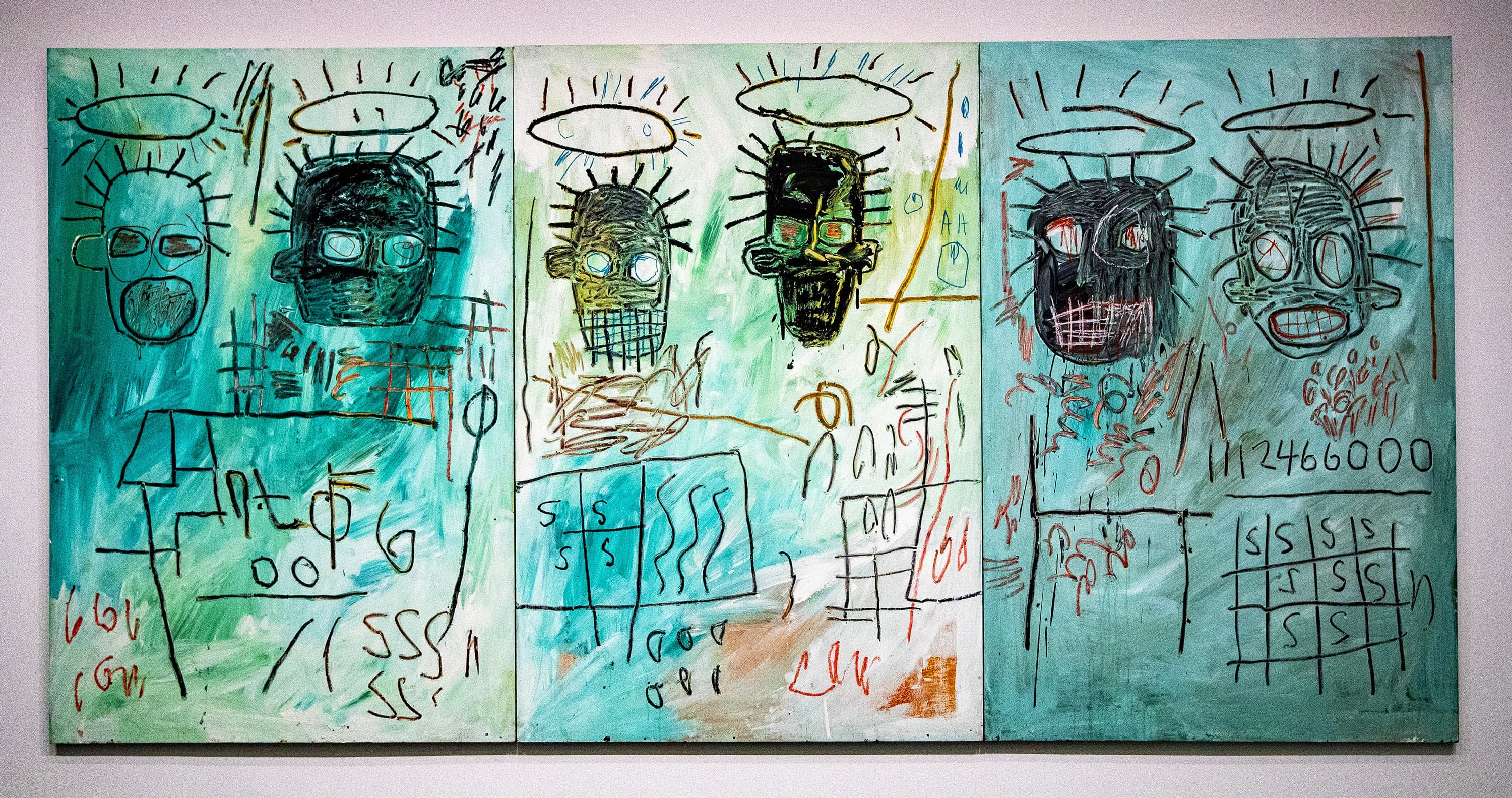
Having to rely solely on his own wits and resources spurred Basquiat to earn a living and make a name for himself as an artist. The teenager panhandled and sold postcards and T-shirts to support himself. During this time, however, he also began to gain attention as a graffiti artist. Using the name SAMO, short for "Same Old Sh*t," Basquiat and his friend Al Diaz painted graffiti on Manhattan buildings that contained anti-establishment messages.
Before long, the alternative press took notice of the pair, which led to a heightened awareness of their artistic social commentary. An eventual disagreement led Basquiat and Diaz to part ways. Their last joint graffiti message, “SAMO is dead,” was found scrawled on countless New York building facades. SAMO's demise was given a send-off ceremony by fellow street artist-turned-media-phenom Keith Haring at his Club 57.

Basquiat, during his career, was awfully prolific. He created around 1500 drawings and 600 paintings, making him imminently collectible. He was one of the earliest “street artists” and “neo-expressionists” to become popular, marking a radical shift within the art scene at the time.
Those who love Basquiat speak to the eloquence and simplicity by which he displayed emotion, color palettes, and unrestrained use of line, shape, and composition. His admirers describe him as having “a highly individualistic, expressive view of the world.”

Basquiat the man and Basquiat the painter are hard to untangle. He lived hard and died harder (from an unintentional heroin overdose), and had more of the rock-star persona than the art aesthete about him, a cool celebrity sparkle that didn’t always work in his favour. Some art connoisseurs find his work hard to take seriously; others, though, have an immediate, almost visceral response. To me, a non-art critic, his work is fantastic: it feels contemporary, with a chaotic, musical sensibility. It’s beautiful and hectic, young and old, graphic, arresting, packed with ambiguous codes; there’s a questioning of identity, especially race, and a sampling of life’s stimuli that takes in music, cartoons, commerce and institutions, as well as celebrities and art greats.
SOURCE: CLICK HERE
It’s not who you are that holds you back,
it’s who you think you’re not.
-Basquiat
Teach about Black Artists Series: Romare Bearden history lesson and Art Project
/beardenwithartwork-5895c28a3df78caebcac0892.jpg)
Romare Bearden was born on September 9, 1912 in Charlotte, N.C.
At an early age, Bearden’s family moved to Harlem. His mother, Bessye Bearden was the New York editor for the Chicago Defender. Her work as a social activist allowed Bearden to be exposed to artists of the Harlem Renaissance at an early age.
Bearden studied art at New York University and as a student, he drew cartoons for the humor magazine, Medley. During this time, Bearden also freelanced with newspapers such as Baltimore Afro-American, Collier’s, and the Saturday Evening Post, publishing political cartoons and drawings. Bearden graduated from New York University in 1935.
Life as an Artist
Throuhgout Bearden’s career as an artist, he was heavily influenced by African-American life and culture as well as jazz music.
Following his graduation from New York University, Bearden was attending the Art Students League and working with expressionist George Grosz. It was during this time that Bearden became an abstract collage artist and painter.
Bearden’s early paintings often depicted African-American life in the South. His artistic style was influenced heavily by muralists such as Diego Rivera and Jose Clemente Orozco.
By the 1960s, Bearden was innovative art works that incorporated acrylics, oils, tiles, and photographs. Bearden was heavily influenced by 20th century artistic movements such as cubism, social realism and abstraction.
By the 1970s, Bearden continued to depict African-American life through the use of ceramic tilings, paintings and collage. For instance, in 1988, Bearden’s collage “Family,” inspired a larger artwork that was installed at the Joseph P. Addabbo Federal Building in New York City.
Bearden was also heavily influenced by the Caribbean in his work. The lithograph “Pepper Jelly Lady,” portrays a woman selling pepper jelly in front of a wealthy estate.
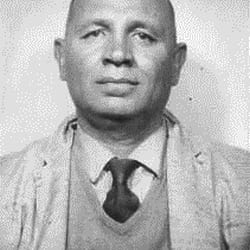
Documenting African-American Artistry
In addition to his work as an artist, Bearden wrote several books on African-American visual artists. In 1972, Bearden coauthored “Six Black Masters of American Art” and “A History of African-American Artists: From 1792 to Present” with Harry Henderson. In 1981, he wrote “The Painter’s Mind” with Carl Holty.

SOURCE: CLICK HERE
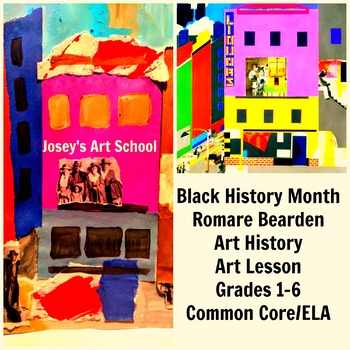
CLICK HERE FOR RESOURCES THAT HELP YOU TEACH ABOUT BLACK ARTISTS

